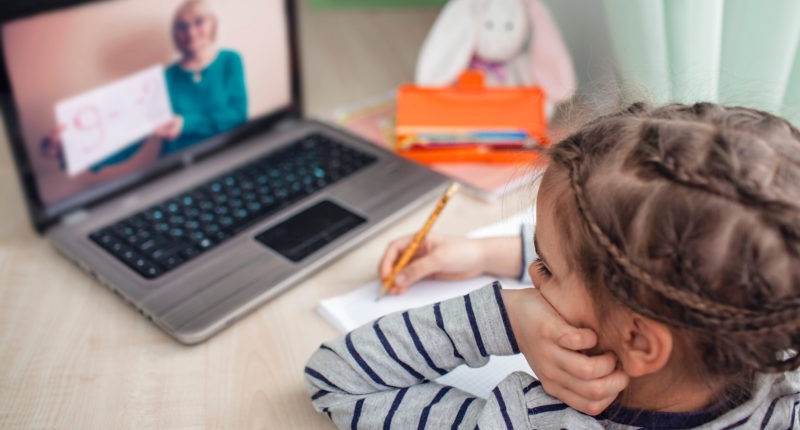The COVID-19 spread has affected every segment of society in various ways. Students have been fighting their own battle since schools and colleges have not been operating as usual. From the far end, it may look like a relief or vacation period for students. However, many class 10 and 12 students had to spend the lockdown period in a fix whether to study for the exams that they are uncertain of, to spend time with their families, or to manage their mental health of the sudden hit of the pandemic.
The government did not want the students to waste time and was too scared to re-open the schools/colleges. An alternative the government thought of was online classes. A lot of debate happened over the matter, and still online classes have been the new norm.
I would always wonder what and how they would teach a kindergarten class kid through online classes as I believe kids cannot stay at one place for hours looking at the screen nor will they attentively listen to anything that is being said by their teacher virtually. Not just that, several middle class and lower-middle-class people are living in rural India who can afford the high-speed internet required for online courses or even a smartphone. Also, many rural areas are not connected to the world wide web.
According to the Economist’s survey, Jan 2018, the size of the middle-class population in India is estimated to be 78 million out of the total population of 1,352.6 million people. Another survey by Krishnan and Hatekar, EPW June 2017 states that 604 million citizens of India belong to the middle class. It may seem a small percentage; however, the number is enormous.
In addition, a UNICEF report states that only 24% of Indian households have access to internet connections to support online education.
Also Read: HRD Issues Guidelines For Online Classes, Suggests Cap on Screen Time
The statistics show that online education is only accessible for high-income groups and the current situation of online classes have created a massive gap across the high, medium, and low-income groups. The credits for this issue goes to the large rural-urban and gender divide the report mentions. Thanks to the unequal and unfair opportunities across the various income groups, children from economically disadvantaged families cannot access remote learning.
The report also expressed that girls from the most marginalised communities have no access to smartphones. Even if they do, the poor internet connections and the lack of quality content in the regional languages have contributed to distress. COVID-19 has shut down over 1.5 million schools across the country affecting 286 million children from the pre-primary to secondary levels of which 49% constitute girls.
Though the Centre and the state governments have come up with several initiatives, including the digital and non-digital platforms so that the students continue learning from home, the digital divide has prevailed.
At a time when the parents are out of work and struggling to find money to feed their families, the lack of window to access online classes, like their peers from high-income groups, has increased discomfort to many children. Recently, there are headlines every other day in the newspaper, such as ‘Unable to get a smartphone for online classes, girl commits suicide’, ‘Girl without smartphone fails to attend online classes, kills self’, and ‘Class 10 girl dies by suicide as poor parents fail to buy a smartphone for online classes’. This is heartbreaking!
In another case, even when children have access to the required technology and gadgets, there may not be the right environment for them to focus on learning. Though all these fusses are temporary as the saying goes, ‘This too shall pass’, children at their young age fail to recognise the nature of the situation and make hasty judgements, which may lead to events that cannot be turned back.
Instead of accepting the defeat, people with social awareness must come together to look at the issue at hand from a different perspective and solve it. For example, a zari artisan who lost all his orders from the lockdown took the help of his colleagues to set up a library in a village located 50km from Kolkata. The initiative was to help students of the village who cannot afford online classes to continue with their learning process.
UNICEF, however, recommends the government to prioritise safe re-opening of the schools. It also urged the government to arrange for compensatory learning for the lost time. Also, the children’s fund has also suggested that educational institutions must make arrangements to be able to adapt to the situation and be ready to face and withstand any future crises.
For any clarifications/feedback on the topic, please contact the writer at apoorva.n@cleartax.in





